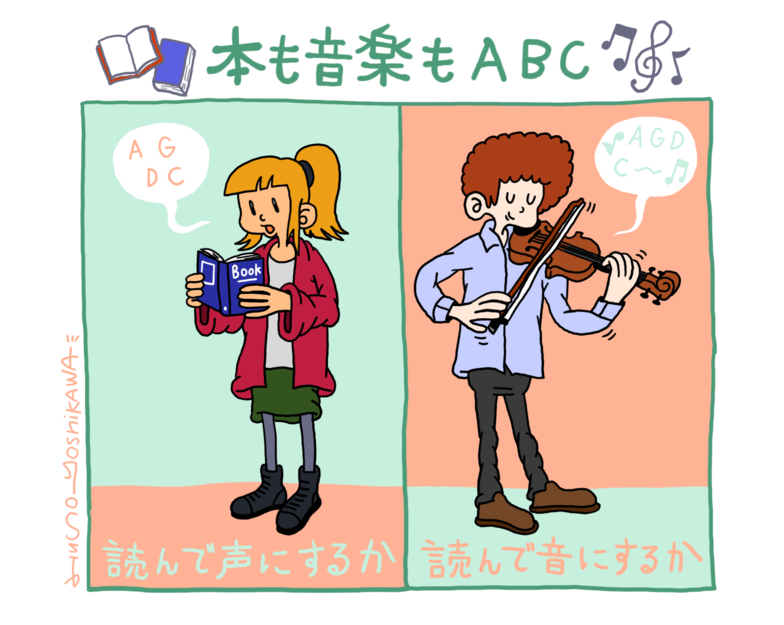After transferring to a school in the U.S., a classmate I was starting to get along with invited me to take violin lessons together. "Violin?" I had taken violin lessons before, so I was intrigued.
"When?" I asked. "Right now," they replied. "Huh!? But it's class time, right? Where?" I asked. "The cafeteria," came the answer. Apparently, during this period, anyone wanting to learn violin, viola, or cello could get lessons in the cafeteria. I see. I decided to head to the cafeteria with them.
Then, more than half my class and kids from other classes gathered and started playing violins and such. To my surprise, there were troublemakers and football players there too. "Huh? Why are they here?" I couldn't hide my shock. Because back when I studied violin in Russia, classical music had this very formal, highbrow vibe – it wasn't something everyone learned. So playing the violin gave me this mysterious sense of superiority.
But here, that atmosphere was completely absent. Everyone was practicing in the cafeteria, instruments in hand. What's more, everyone's skill level varied wildly, and a significant number were practicing different pieces altogether.
While I was pondering this, the teacher came over to me. I'd expected a lecture on musical basics or famous composers, but my expectations were dashed. The teacher simply handed me a violin and sheet music, said, "Now, go practice," and left.
"Huh!?" I stammered in confusion. The teacher came back and said, "Music is very similar to reading aloud. You read the written characters and use an instrument instead of your voice to make the sounds. If you can read sheet music, anyone can play an instrument. Go ahead, read the sheet music."
Looking at the sheet music, I saw the pitches written in letters, not solfège. I was momentarily confused, but even without musical knowledge, anyone could understand this immediately. It really was easy to grasp. All that was left was to translate it into the instrument's sound. Place your fingers where the stickers are on the instrument. It really felt just like reading a book. Suddenly, it didn't seem like something special; it felt like something anyone could do. What was that high barrier I felt before?
Later, when I asked for details, I learned this class was called "Strings," and any child interested in string instruments could join. The school lends the instruments, and it costs nothing. Since it happens during class time, no special scheduling is needed. You start practicing simple songs, and once you can play them, the teacher gives you a sticker. Then you get sheet music for the next difficulty level and practice that song. It felt very new. I joined the Strings members too.
This sticker-collecting continued until around spring. Just as I managed to collect five or six stickers, I learned there would be a recital. We were given ribbons to wear on our chests, where we could attach the collected stickers.
On the day, when I went to the concert hall, there were lots of kids from other schools too. The total number easily exceeded 100. And wouldn't you know it, everyone was wearing a ribbon with the same stickers pinned to their chest. The system was that everyone lined up on the hall stage according to the number of stickers they had, and then we all played together.
The number of stickers signaled how many pieces you would play. So, with six stickers, you played up to the sixth piece, then stood by with your violin. As the pieces got harder, fewer people played them, meaning you got the spotlight. You got to stay on stage longer and received applause right until the end. This became the motivation for next year's practice.
They never taught us music trivia or past greats until the very end (though we did sometimes look up who Mozart was ourselves). From the top students to the rowdy troublemakers, everyone simply enjoyed playing the violin, viola, or cello.
You won't understand the joy of music unless you play it. You won't know if you might have a talent for it either. Using playing as the entry point, they brilliantly teach many children the depth of classical music. And they encounter a whole new world.
This method might not be the best for cultivating top-tier artists. But why do most people engage with art in the first place? This question might apply not just to art, but to all fields of study. If so, how should adults draw children into their respective worlds? It's a profoundly thought-provoking question.





